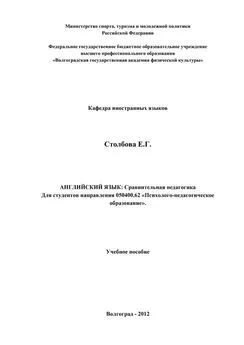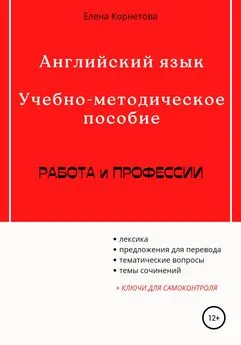Елена Беликова - Английский язык для медиков
- Название:Английский язык для медиков
- Автор:
- Жанр:
- Издательство:Конспекты, шпаргалки, учебники «ЭКСМО»b4455b31-6e46-102c-b0cc-edc40df1930e
- Год:2008
- Город:Москва
- ISBN:978-5-699-24046-3
- Рейтинг:
- Избранное:Добавить в избранное
-
Отзывы:
-
Ваша оценка:
Елена Беликова - Английский язык для медиков краткое содержание
Студенту без шпаргалки никуда! Удобное и красивое оформление, ответы на все экзаменационные вопросы ведущих вузов России.
Английский язык для медиков - читать онлайн бесплатно полную версию (весь текст целиком)
Интервал:
Закладка:
QO 2 = CO χ 1,34 (ml/g) χ [Hg] χ SaO 2 + + 0,003 (ml/ml per mm Hg) χ РаО 2,
where QO 2 is oxygen delivery (ml/min), CO is cardiac output (L/min). Hg is hemoglobin concentration (g/L), SaO 2is the fraction of hemoglobin saturated with oxygen, and PaO 2is the partial pressure of the oxygen dissolved in plasma and is trivial compare to the amount of oxygen carried by hemoglobin. Examination of this equation reveals that increasing hemoglobin concentration and increasing cardiac output can enhance oxygen delivery. Saturation is normally greater than 92 % and usually is easily maintained through supplemental oxygen and mechanical ventilation. Cardiac output is supported be insuring adequate fluid resuscitation (cardiac preload) and manipulating contractility and after load pharmacologically (usually cat—echolamines).
New words
Equation – уравнение
Delivery – доставка
Cardiac output – сердечный выброс
Fraction – фракция
Contractility – сократимость
33. Surface tension forces
In a liquid, the proximity of adjacent molecules results large, intermolecular, attractive (Van der Waals) forces that serve to stabilize the liquid. The liquid—air surface produces inequality of forces that are strong on the liquid side and weak on the gas side because of the greater distance between molecules in the gas phase. Surface tension causes the surface to maintain as small an area as possible. In alveoli, the result a spherically—curved, liquid lining layer that tends to be pulled inward toward the center of curvature of the alveolus. The spherical surface of the alveolar liquid lining behaves in manner similar to a soap bubble. The inner and outer surface of a bubble exert an inward force that creates a greater pressure inside than outside the bubble. Interconnected alveoli of different sizes could lead to collapse of smaller alveoli (atelectasis) into larger alveoli, because of surface tension, the pressure inside the small alveolus (smaller radius of curvature) is greater than that of the larger alveolus. Without surfactant, gas would therefore move from smaller to larger alveoli, eventually producing or giant alveolus.
Pulmonary surfactant: Pulmonary surfactant is aphospho—lipid (comprised primari ly of dipalmitoyl phosphatidylcholi—ne) synthesized by type II alveolar epithelial cells. Surfactant reduces surface tension, thereby preventing the collapse of small alveoli. Surfactant increases the compliance of the lung and reduces the work of breathing.
Surfactant keeps the alveoli dry because alveolar collapse tends to draw fluid into the alveolar space. Surfactant can be produced in the fetus as early as gestational week 24, but is synthesized most abundantly by the 35 th week of gestation. Neonatal respiratory distress syn drome can occur with premature infants, and results in areas of atelectasis, filling of alveoli with transudate, reduced lung compliance, and V/Q mismatch leading to hypoxia and CO 2retention.
New words
surface tension forces – поверхностные силы напряжения
liquid – жидкость
proximity – близость
adjacent – смежный
intermolecular – межмолекулярный
to stabilize – стабилизироваться
surface – поверхность
distance – расстояние
phase – фаза
tension – напряжение
spherically—curved – сферически—кривой
lining – выравнивание
inward – внутрь
toward – к
curvature – искривление
spherical – сферический
soap bubble – мыльный пузырь
inner – внутренний
to exert – проявить
interconnected – связанный
34. The nose
The respiratory system permits the exchange of oxygen and carbon dioxide between air and blood by providing a thin cellular membrane deep in the lung that separates capillary blood from alveolar air. The system is divided into a conduct ing portion (nasal cavity, pharynx, larynx, trachea, bronchi, bronchioles) that carries the gases during inspiration and expiration, and a respiratory portion (alveoli) that provides for gas exchange between air and blood.
The nose contains the paired nasal cavities separated by the nasal septum. Anteriorly, each cavity opens to the outside at a nostril (naris), and posteriorly, each cavity opens into the nasopharynx. Each cavity contains a vestibule, a respiratory area, and an olfactory area, and each cavity communicates with the paranasal sinuses.
Vestibule is located behind the nares and is continuous with the skin.
Epithelium is composed of stratified squamous cells that are similar to the contiguous skin.
Hairs and glands that extend into the underlying connective tissue constitute the first barrier to foreign particles entering the respiratory tract.
Posteriorly, the vestibular epithelium becomes pseudo—stratified, ciliated, and columnar with goblet cells (respiratory epithelium).
Respiratory area is the major portion of the nasal cavity.
Mucosa is composed of a pseudostratified, ciliated, columnar epithelium with numerous goblet cells and a subjacent fibrous lamina propria that contains mixed mucous and serous glands.
Mucus produced by the goblet cells and the glands is carried toward the pharynx by ciliary motion.
The lateral wall of each nasal cavity contains three bony pro jections, the conchae, which increase the surface area and pro mote warming of the inspired air. This region is richly vascularized and innervated.
Olfactory area is located superiorly and posteriorly in each of the nasal cavities.
The pseudostratified epithelium is composed of bipolar neu rons (olfactory cells), supporting cells, brush cells, and basalcells. The receptor portions of the bipolar neurons are modi fied dendrites with long, nonmotile cilia.
Under the epithelium, Bowman's glands produce serous fluid, which dissolves odorous substances.
Paranasal sinuses are cavities in the frontal, maxillary, ethmoid and sphenoid bones' that communicate with the nasal cavities.
The respiratory epithelium is similar to that of the nasal cavi ties except that it is thinner.
Numerous goblet cells produce mucus, which drains to the nasal passages. Few glands are found in the thin lamina propria.
New words
respiratory system – дыхательный аппарат
oxygen – кислород
carbon – углерод
dioxide – диоксид
nasal cavity – носовая впадина
pharynx – зев
larynx – гортань
trachea – трахея
bronchi – бронхи
bronchioles – бронхиолы
nasal septum – носовая перегородка
nostril – ноздря
vestibule – вестибулярный
respiratory area – дыхательная область
olfactory area – обонятельная область
paranasal sinuses – параназальные пазухи
35. Nasopharynx and larynx
Nasopharynx is the first part of the pharynx.
It is lined by a pseudostratified, ciliated, columnar.
Epithelium with goblet cells: under the epithelium, a gland—containing connective tissue layer rests directly on the periosteum of the bone.
The cilia beat towards the oropharynx, which is composed of a stratified, squamous, nonkeratinized epithelium.
The pharyngeal tonsil, an aggregate of nodular and diffuse lymphatic tissue, is located on the posterior wall of the nasopharynx subjacent to the epithelium. Hypertrophy of this tissue as a result of chronic inflammation results in a condition known as adenoiditis. Larynx is a passageway that connects the pharynx to the trachea and contains the voicebox. Its walls are composed of cartilage held together by fibroelastic connective tissue.
The mucous layer of the larynx forms two pairs of elastic tissue folds that extend into the lumen. The upper pair are called the vestibular folds (or false vocal cords), and the lower pair con stitute the true vocal cords. The epithelium of the ventral side of the epiglottis and of the vocal cords is composed of stratified, squamous, nonkeratinized cells. The remainder of the larynx is lined with ciliated, pseudostratified, columnar epithelium. All cilia, from the larynx to the lungs, beat upward toward the nasopharynx.
New words
nasopharynx – носоглотка
first – сначала
pseudostratified – псевдомногослойный
ciliated – снабженный ресничками
columnar – колоночный
epithelium – эпителий
goblet cells – кубические клетки
gland—containing – содержащий железу
connective tissue – соединительная ткань
layer – слой
directly – непосредственно
periosteum – надкостница
bone – кость
cilia – ресница
oropharynx – верхняя часть глотки
stratified – стратифицированный
squamous – чешуйчатый
nonkeratinized – некеритизированный
somewhere – где—нибудь, куда—нибудь, где—то, куда—то
36. Trachea
The trachea, a hollow cylinder supported by 16–20 cartilaginous rings, is continuous with the larynx above and the branching primary bronchi below.
Mucosa of the trachea consists of the typical respiratory epitheli um, an unusually thick basement membrane, and an underlying lamina propria that is rich in elastin. The lamina propria contains loose elastic tissue with blood vessels, lymphatics, and defensive cells. The outer edge of the lamina propria is defined by a dense network of elastic fibers.
Submucosa consists of dense elastic connective tissue with seroriltfcous glands whose ducts open onto the surface of the epithe lium.
Cartilage rings are C—shaped hyaline cartilage pieces whose free extremities point dorsally (posteriorly). They are covered by a perichondrium of fibrous connective tissue that surrounds each of the cartilages. Smooth muscle bundles (trachealis muscle) and ligaments span the dorsal part of each cartilage.
Adventita a consists of peripheral dense connective tissue that binds the trachea to surrounding tissues.
Primary bronchi
The trachea branches at its distal end into the two primary bronchi. Short extrapulmonary segments of the primary bronchi exist before they enter the lungs at the hilus and then branch further. The histologic structure of the walls of the extrapulmonary segment of the primary bronchi is similar to that of the tracheal wall.
New words
hollow – пустота
cylinder – цилиндр
supported – поддержанный
cartilaginous
rings – хрящевые кольца
larynx – гортань
above – выше
branching – переход
primary bronchi – первичные бронхи
below – ниже
mucosa – слизистая оболочка
typical – типичный
respiratory epitheli um – дыхательный эпителий
an unusually – нетипитчно
thick – толстый
basement – основание
Читать дальшеИнтервал:
Закладка:










